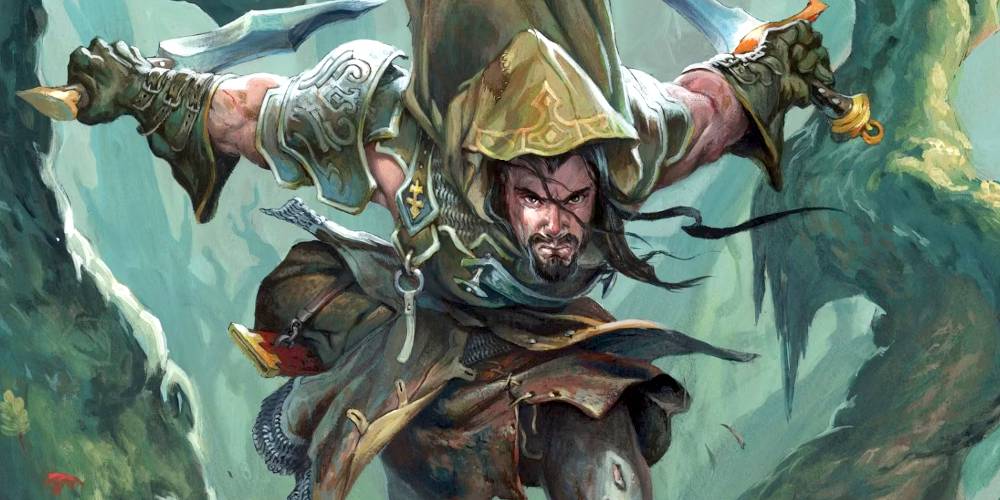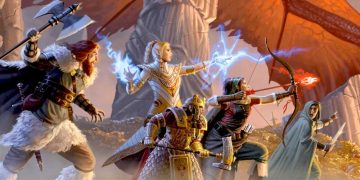From tracking the movements of wild beasts to taking out enemies from a distance with razor-sharp accuracy, Rangers are one of the coolest fantasy archetypes featuring some of the coolest tropes.
However, when it comes to Dungeons & Dragons 5th Edition, Rangers seem to lack the oomph that many classes have. Their abilities are vastly different compared to previous versions of D&D, making them one of the more difficult classes to play now.
Between their limited spell list and early class decisions that greatly impact their overall usefulness in a campaign, it can be intimidating to play a Ranger if you want to pull your weight in a party.
If you're struggling to build a viable Ranger in D&D 5e, here are several important tips and features to keep in mind.
This article is part of a series of D&D class guides for beginners. If you're interested in other classes, check them out as well:
- D&D 5e Barbarian Guide for Beginners
- D&D 5e Bard Guide for Beginners
- D&D 5e Cleric Guide for Beginners
- D&D 5e Druid Guide for Beginners
- D&D 5e Fighter Guide for Beginners
- D&D 5e Monk Guide for Beginners
- D&D 5e Paladin Guide for Beginners
- D&D 5e Ranger Guide for Beginners
- D&D 5e Rogue Guide for Beginners
- D&D 5e Sorcerer Guide for Beginners
- D&D 5e Warlock Guide for Beginners
- D&D 5e Wizard Guide for Beginners
Tip 1: Work With Your DM (And Start Early)
Two key Ranger features, Favored Enemy and Natural Explorer, need to be decided upon at 1st Level and will stick with you forever.
Favored Enemy grants bonuses to tracking different types of creatures (e.g. Beasts, Giants, Undead) while Natural Explorer makes it easier to travel on certain types of terrain (e.g. Desert, Forest, Swamp).
Since both of these are chosen during character creation—before the first session even kicks off—it's entirely possible to accidentally picking creature and terrain types that you'll never encounter.
There's nothing worse than having a core class feature that you'll never be able to use, let alone two of them.
That's why it's crucial to talk to your DM prior to creating your Ranger. Ask them for guidance on which types of creatures and terrains you're likely to run into. If the DM is worth their salt, they'll work with you and make sure your Ranger is useful on the party's adventures.
Additionally, keep in mind that these two abilities do work together—if you're tracking a favored enemy through your chosen terrain, you'll have both benefits in tandem.
Tip 2: Hunter's Mark Is Your Most Important Spell
At 2nd Level, Rangers get access to spells from a relatively limited spell list. Rangers gain Spell Slots at a slower rate than most other classes, so you'll need to be very mindful about which spells you end up picking.
One of the first spells you need to take is Hunter's Mark. This spell not only grants a damage boost against a specific creature, but it also makes it easier to track them down should they slip away from combat.
Another detail that makes Hunter's Mark even more useful is that it can be cast using a Bonus Action, meaning you don't have to sacrifice your Action of the round to cast it.
If a creature that's marked with Hunter's Mark goes to zero Hit Points before the spell wears off, you can shift it to another creature you can see. In other words, you could potentially cast it once and it'll last you an entire encounter (as long as you maintain concentration).
Tip 3: Don't Underestimate Trap Spells
It's easy to overlook spells like Cordon of Arrows or Snare, which require a fair amount of planning to be effective in action.
However, the Ranger class is all about scouting ahead and luring enemies into a situation where the party holds an advantage. Laying down traps and snares—magical or mundane—are a big part of the Ranger flavor.
Don't be afraid to embrace this side of the class, using these trap spells to give your party an advantage before combat even starts.
With some properly laid traps, you can bolster your party's melee and ranged capabilities. Think about using the Ranger's stealth abilities to get into tricky spots, and take advantage of Natural Explorer!
Tip 4: Pick the Right Ranger Archetype
At 3rd Level, Rangers get to choose a Ranger Archetype. These grant powerful new abilities at later levels, allowing you to customize your Ranger to suit your playstyle.
There are two Ranger Archetypes detailed in the D&D Player's Handbook, with more added in later books. Since this guide is for beginners, we recommend one of the two core options.
The Hunter
The Hunter Ranger Archetype allows you to embody the classic Ranger builds of previous D&D editions.
When you reach 3rd, 7th, 11th, and 17th Levels, you can choose a new ability from the list presented in the rulebook.
For example, at 3rd Level, you can choose between Colossus Slayer (extra damage against targets who are already wounded), Giant Killer (use a Reaction to attack a nearby creature who misses an attack against you), or Horde Breaker (attack a second creature when you attack).
This is the best Ranger Archetype to take for players who want to focus on their combat abilities and want more options during encounters.
The Beast Master
The Beast Master Ranger Archetype gives you the chance to develop a bond between your Ranger and a wild animal.
This bond grants a bonus to the creature's Attack rolls, plus an increased list of actions they can take on their turn.
The downside of Beast Master is that it requires you to manage an extra character in combat and sacrifices your Ranger's own strength for the flavor of having a loyal animal companion.
This is one of the weaker character choices provided in the D&D Player's Handbook and should only be taken by players who are comfortable with prioritizing roleplay over practical results.



